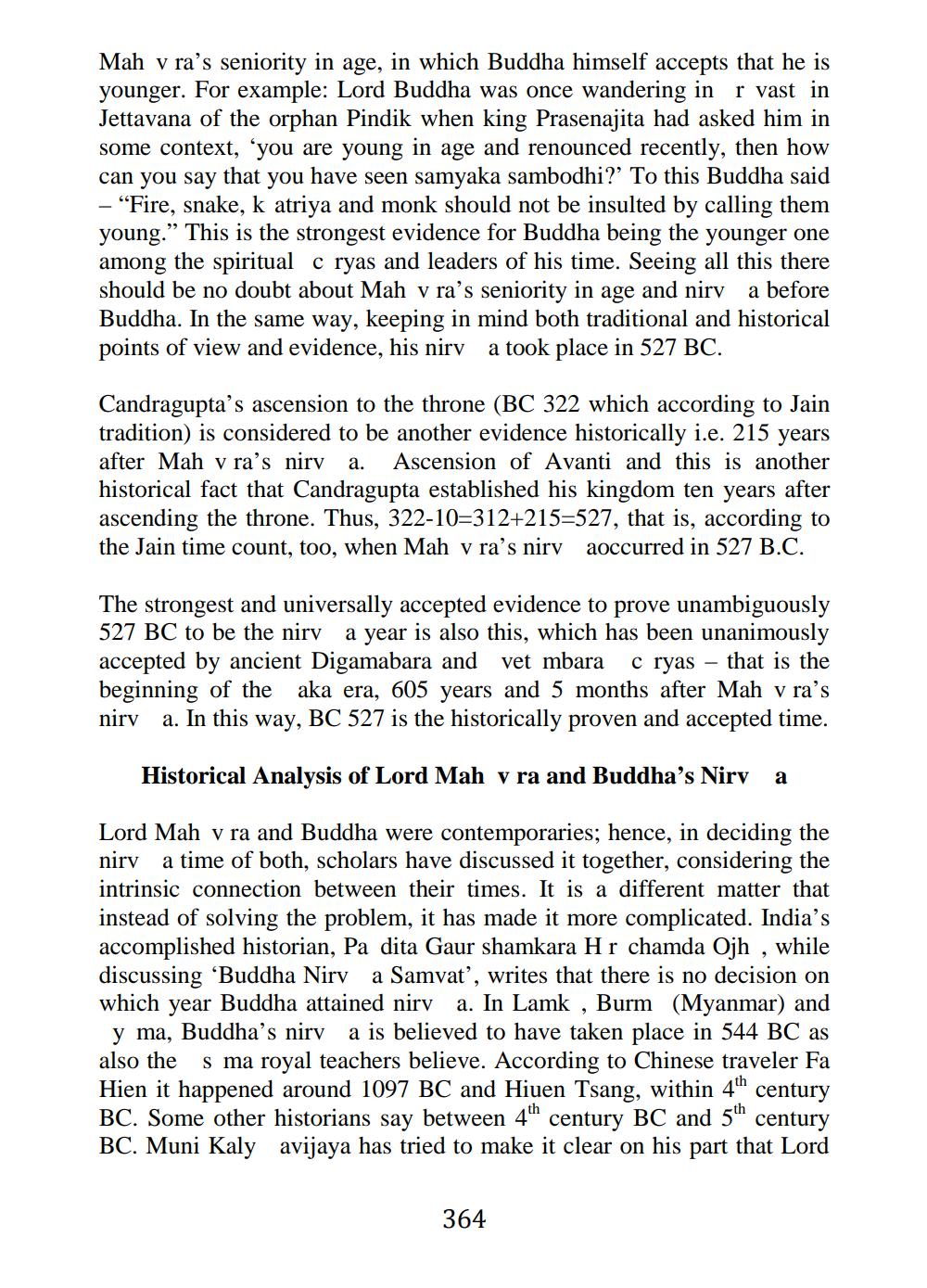________________
Mah v ra's seniority in age, in which Buddha himself accepts that he is younger. For example: Lord Buddha was once wandering in r vast in Jettavana of the orphan Pindik when king Prasenajita had asked him in some context, you are young in age and renounced recently, then how can you say that you have seen samyaka sambodhi?' To this Buddha said - "Fire, snake, k atriya and monk should not be insulted by calling them young.” This is the strongest evidence for Buddha being the younger one among the spiritual c ryas and leaders of his time. Seeing all this there should be no doubt about Mah v ra's seniority in age and nirv a before Buddha. In the same way, keeping in mind both traditional and historical points of view and evidence, his nirva took place in 527 BC.
Candragupta's ascension to the throne (BC 322 which according to Jain tradition) is considered to be another evidence historically i.e. 215 years after Mah v ra's nirva. Ascension of Avanti and this is another historical fact that Candragupta established his kingdom ten years after ascending the throne. Thus, 322-10=312+215=527, that is, according to the Jain time count, too, when Mah v ra's nirvaoccurred in 527 B.C.
The strongest and universally accepted evidence to prove unambiguously 527 BC to be the nirv a year is also this, which has been unanimously accepted by ancient Digamabara and vet mbara c ryas – that is the beginning of the aka era, 605 years and 5 months after Mah v ra's nirva. In this way, BC 527 is the historically proven and accepted time.
Historical Analysis of Lord Mah v ra and Buddha's Nirva
Lord Mah v ra and Buddha were contemporaries; hence, in deciding the nirv a time of both, scholars have discussed it together, considering the intrinsic connection between their times. It is a different matter that
stead of solving the problem, it has made it more complicated. India's accomplished historian, Pa dita Gaur shamkara Hr chamda Ojh , while discussing Buddha Nirva Samvat', writes that there is no decision on which year Buddha attained nirva. In Lamk , Burm (Myanmar) and
y ma, Buddha's nirva is believed to have taken place in 544 BC as also the s ma royal teachers believe. According to Chinese traveler Fa Hien it happened around 1097 BC and Hiuen Tsang, within 4th century BC. Some other historians say between 4th century BC and 5th century BC. Muni Kaly avijaya has tried to make it clear on his part that Lord
364




